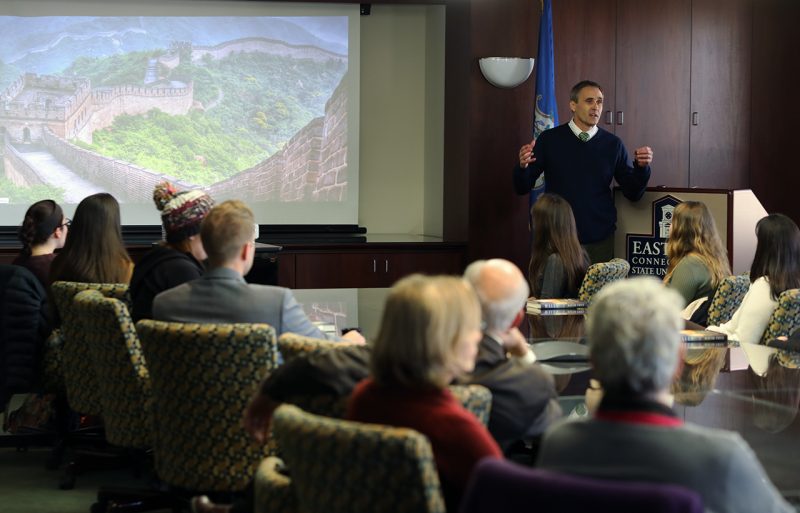


Published on November 16, 2018
 Although they have shaped human civilization, little research has been published about walls. David Frye, a history professor at Eastern Connecticut State University, has changed that with his new book, “Walls: A History of Civilization in Blood and Brick.” On Nov. 14, Frye discussed “Walls” at a book talk and signing event with the university community.
Although they have shaped human civilization, little research has been published about walls. David Frye, a history professor at Eastern Connecticut State University, has changed that with his new book, “Walls: A History of Civilization in Blood and Brick.” On Nov. 14, Frye discussed “Walls” at a book talk and signing event with the university community.
“We have histories of water, we have histories of salt, we have dozens of histories of chocolate,” said Frye during his presentation. “What about these walls that no one’s written anything about?”
Even Frye’s own research did not begin with walls, but rather with Roman history, which is his primary field of study. In the process, he dedicated several weeks to researching city layouts and walls, searching how these structures impacted the societies on either side.
While in discussion with a fellow professor, Frye lamented the lack of books or academic research published about walls and the reasons behind their creation. Why, he wondered, had no one written a book about walls?
“He told me, ‘You know the reason why nobody wrote a book about walls? Because no one gives a flip,'” Frye said ruefully.
However, the 2016 election suddenly brought the talk of walls back into the spotlight. “Now,” Frye recalls, “You have auditoriums full of people chanting ‘Build that wall!'” Within a very short time frame, people began caring about walls.
While walls are an often contested topic in today’s political climate, Frye says that walls were rarely controversial in ancient times. For thousands of years, civilizations spent time building and assaulting walls, and throughout history there are walls found on every continent. From the Persians, Romans and the Chinese to the Inca, the Ukrainians and dozens more, walls have been built by societies across the globe.
Frye’s book, which Kirkus Reviews called “provocative” and “timely,” delves into the people who live on either side of walls. Between entertaining narratives of his own archeological digs and his research as a historian, Frye’s book manages to tell 4,000 years of history in less than 300 pages. Although he writes briefly on modern walls such as the Berlin Wall, the majority of his book is dedicated to the walls of Mesopotamia, Babylon, Greece, China, Rome and others.
These walls serve as the main characters of the narrative, which often feels more like a novel than academic literature. Frye asks several important questions in his book that resonate long after finishing. Did walls make civilization possible? And can we live without them?
Written by Raven Dillon